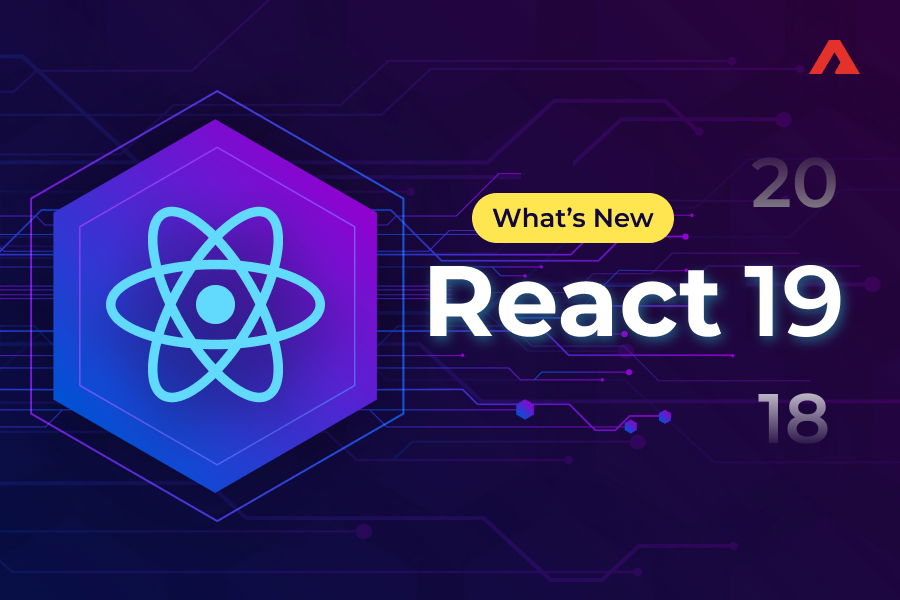Elasticsearch is an advanced search engine that is both open-source and highly scalable. With the help of this system, one can store and analyze a huge quantity of information.
This data can be later analyzed in real-time and in a practical way. It gives quick answers, essentially in milliseconds. With Elasticsearch services, you can achieve faster search responses.
This happens as instead of directly searching the text, it will search for an index.
Why use Elasticsearch?
As already stated, this search system is an advanced search engine. Compared to other search engines, it uses an internal structure. It employs JSON documents and files.
So you can analyze data in almost real-time to search for the required information. It is awfully useful when employed for big data.
Below are some technical features about Elasticsearch development solutions:
- The distribution of this analytics engine is in real-time
- The development of Elasticsearch occurs in Java
- It is open source
- It employs a structure that has a base in documents
- It doesn’t need schema and tables
Elasticsearch services have many advantages including scalability and speed. Implementing this tool is a great way to get a fast response to querying.
When it comes to scalability, it should be run on a laptop. It can also be run on multiple servers with a huge data load.
Apart from the advantage of speed and scalability, this system has higher resilience. It can thus avert failures and is flexible in terms of data type.
Elasticsearch solutions have better use when it comes to big data. This smoothens the analysis of huge data with real-time searches. This is the major reason why many businesses prefer this system.
It is one of the most interesting search engines. Thus, many leading companies including Netflix, GitHub, Mozilla, and Stack Exchange use it.
How to search and analyze data in Elasticsearch?
Queries are the language that is used to search data on this system. It is the language that combines different searches. It performs different searches including unstructured, structured, metric, and Geo.

When it comes to analyzing in Elasticsearch, it gets better. It helps to understand the multitude of log lines in an easy way. With this, you can use aggregations.
This is used to zoom out and explore data trends and patterns. Even huge clouds can be analyzed. Similarly, huge infrastructure can be analyzed in a short period.
All that is needed is to import these logs into this search tool. Based on this response, we can understand the root cause of any issue in an infrastructure.
How to use Elasticsearch Solution?
There are certain points to be kept in mind while using this search concept. This includes understanding its installation and interface. Below we are detailing the practical parts of using it.
1. Installation
For the installation of this search tool, you need Java version 8 or higher. You need to install Java before installing this system. You can install it from elastic. co. website.
After this, you need to follow certain steps to install it in the operational system. In the case of macOS with Home-brew installed, you need to type ‘Install Elasticsearch’.
2. Interface
An interface is a necessity for using this search system. Kibana is an example of such an interface. It is a good web interface that helps to visualize or manipulate Elasticsearch data.
You can download Kibana on elastic. co. To install it, you have to follow the steps mentioned there. When used together, it is better to download the same version of Elasticsearch and Kibana.
Once both are installed, you are ready to go.
To develop software with this search engine a programming language is needed. Some specific programming languages are acceptable in this search tool. They are mentioned below:
How does Elasticsearch work?
Let us better understand the working of Elasticsearch. We will cover some basic concepts of Elasticsearch development. This includes how it organizes data and its backend components.
Useful Concepts about Elasticsearch Services
There are some useful concepts that you should know about it. This is important if you want to use it the right way. It consists of various elements. This includes:
- Node – A single server that is a part of a cluster is called a node. It stores the data and participates in the indexing of a cluster. Nodes also improve the cluster’s search capabilities.
- Cluster – A collection of one or more nodes is a cluster. The cluster holds the entire data. It also provides amalgamated indexing. Clusters also provide search capabilities across various nodes. It is usually identified by unique names. The default name is ‘/ elastic search/.
- Index – It is a collection of various documents with comparable characteristics. The index is identified by names. The name helps to refer to an index. The name is used while performing a search, indexing, update or delete operations. All the operations are performed against the stored documents. As many indexes, you can store them in a single cluster as you want.
- Document – The basic unit of information that can be indexed is called document. A document can be expressed in JSON. It is an omnipresent internet data interchange format.
- Shards – With this search engine you can subdivide the index into many pieces. They are called shards. Every shard is an independent and fully functional “index”. It can be hosted on any one of the nodes within a cluster. In cases when an index is put on a single node to take more space, shards are useful. These are useful when more disk space is needed than available. This index is then subdivided between various nodes. As shards allow people to parallelize and distribute operations. This is done across shards and this increases their performance.
- Replicas – You can make one or more copies of the shards of an index. They are allowed through an index’s shards called replica or replica shards. This provides higher availability when a node fails. This also allows us to scale out the search volume. This is important as you can execute searches on all replicas in parallel.
Logical Concepts in Elasticsearch
- Documents – These are basic units of information that are indexed in this search system. They are expressed in JSON. The global internet data interchange format is employed usually. Think of a document in a database. This represents a given entity. When it comes to Elasticsearch, a document is more than a text. This structured data is encoded in JSON.
- Indices – They are a collection of various documents with comparable characteristics. Index name helps to refer to an index. The name is used while performing a search, indexing, update or delete operations. All the operations are performed against the stored documents. As many indexes can be stored in a single cluster as you want.
- Inverted Index – The index in this search system is called an inverted index. This is the mechanism through which search engines operate. The inverted index is a data structure that stores a mapping from content. The storage is done in locations in a document or document sets.
Understanding an ELK Stack
ELK is the short form of three open-source systems. They are Elasticsearch, Logstash, and Kibana. Apart from this engine, Logstash is a server‑based data processing system.
It simultaneously grasps data from various sources. It transforms the data and transfers it to a “stash”. Whereas Kibana allows users to see data using graphs and charts and graphs used in this search system.

The ELK stack gives users the capability to aggregate various logs. They can be aggregated from systems and applications. Users can study these logs, and they can create visualizations.
They are then used in apps and infrastructure management. The ELK stack helps in security analytics, faster troubleshooting, and much more.
The use of Kibana in ELK Stack
Within Elasticsearch development, Kibana enables users to give shape to their data. They can also navigate Elastic Stack with Kibana. It helps to:
- Discover documents, analyze logs and find security vulnerabilities,
- Look for insights, visualize charts, maps, gauges, maps and combine these in the dashboard.
- Manage indices and the ingest pipelines with Kibana. You can monitor the health of the Elastic Stack cluster with it. Also, control the users who can have access to its features.
Executing Elasticsearch
Like all other search engines, you need certain commands for execution. When it comes to executing Elasticsearch development, you need a directory.
This can be found where Elasticsearch was installed. Elasticsearch can be executed through the terminal: $ ./elasticsearch.
Start Elasticsearch
To execute it, you need to open another terminal window. This window is used to execute Kibana. It is also needed to go to the directory and execute $ ./kibana. Below are the key commands:
- PUT – The PUT command helps users to insert new document data. This document data is within Elasticsearch. After this press the green play button for the result. You have to type the code in console – PUT /my_playlist/song/6
This means you inserted document data into this engine where my_playlist: is the index name. song: is the document name. 6: is the song id.
The same PUT command is used to UPDATE any value to this document.
- DELETE – In the above case, when you want to delete a document. Use the command – DELETE /my_playlist/song/6.
Searching Data
The above example was a basic one. Elasticsearch helps you to get above these simple searches. There are more complex queries that can be resolved.
You can get deeper into this system and execute other queries. You have different Search APIs for this. To find more about them, here!
You need to open a terminal to load the data set into this search engine. Then go to the directory in which the file is downloaded. After this execute the required command.
After this, you will have the required data in this system. You can use some examples with URI Search and using Query DSL. This will help you understand this engine better.
To query Elasticsearch, URI might not be the best means. You can also use QueryDSL if you are up for it. You can understand QueryDSL below.
A Query DSL is an Abstract Syntax Tree of queries. It consists of two types of clauses:
- Leaf query clause: This looks for a particular value in a field. This could be a match, range, or term query.
- Compound query clause: This is used for logically combining multiple queries.
Synopsis
It is vital to understand Elasticsearch development. It is a crucial part of any data analytics service. It is a search engine with an underlying architecture. This system has components that make it scalable and fast.
The heart of this ecosystem is its complementary tools. They can be used for multiple cases. They include analytics, search, data processing, or storage. In advanced use cases, you join and blend your data.
The Elasticsearch data can be blended across multiple indexes. That is why Elasticsearch development is helpful for technical and non-technical users.
All product and company names are trademarks™, registered® or copyright© trademarks of their respective holders. Use of them does not imply any affiliation with or endorsement by them.




 Insurance
Insurance

























